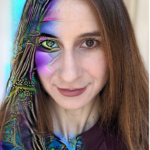Almost Matching Exactly

Cynthia Rudin,
Professor of Computer Science, Electrical and Computer Engineering and Statistical Science at Duke University, US
Abstract:
I will present a matching framework for causal inference in the potential outcomes setting called Almost Matching Exactly. This framework has several important elements: (1) Its algorithms create matched groups that are interpretable. The goal is to match treatment and control units on as many covariates as possible, or “almost exactly.” (2) Its algorithms create accurate estimates of individual treatment effects. This is because we use machine learning on a separate training set to learn which features are important for matching. The key constraint is that units are always matched on a set of covariates that together can predict the outcome well. (3) Our methods are fast and scalable. In summary, these methods rival black box machine learning methods in their estimation accuracy but have the benefit of being interpretable and easier to troubleshoot. Our lab website is here:
https://almost-matching-exactly.github.io
Bio:
Cynthia Rudin is a professor of computer science, electrical and computer engineering, and statistical science at Duke University, and directs the Prediction Analysis Lab, whose main focus is in interpretable machine learning. She is also an associate director of the Statistical and Applied Mathematical Sciences Institute (SAMSI). Previously, Prof. Rudin held positions at MIT, Columbia, and NYU. She holds an undergraduate degree from the University at Buffalo, and a PhD from Princeton University. She is a three-time winner of the INFORMS Innovative Applications in Analytics Award, was named as one of the “Top 40 Under 40” by Poets and Quants in 2015, and was named by
Businessinsider.com
as one of the 12 most impressive professors at MIT in 2015. She is a fellow of the American Statistical Association and a fellow of the Institute of Mathematical Statistics.
Some of Cynthia (collaborative) projects are: (1) she has developed practical code for optimal decision trees and sparse scoring systems, used for creating models for high stakes decisions. Some of these models are used to manage treatment and monitoring for patients in intensive care units of hospitals. (2) She led the first major effort to maintain a power distribution network with machine learning (in NYC). (3) She developed algorithms for crime series detection, which allow police detectives to find patterns of housebreaks. Her code was developed with detectives in Cambridge MA, and later adopted by the NYPD. (4) She solved several well-known previously open theoretical problems about the convergence of AdaBoost and related boosting methods. (5) She is a co-lead of the Almost-Matching-Exactly lab, which develops matching methods for use in interpretable causal inference.
 Learning, reasoning, optimisation: Connections, complementarity and chances
Learning, reasoning, optimisation: Connections, complementarity and chances
Holger H. Hoos, Leiden Institute of Advanced Computer Science (LIACS), The Netherlands and University of British Columbia, Canada
Abstract: Machine learning, logical inference and mathematical optimisation are pillars of artificial intelligence. As individual areas within AI (and beyond), they have had profound impact in a broad range of applications; jointly, they will shape our future. In this talk, I will explore connections between these areas, illustrate how they can complement each other, and sketch out some of the chances arising from bringing them more closely together. I will use examples from my own research in automated reasoning, automated machine learning and stochastic local search to explain how building bridges between these areas can facilitate major progress in key areas of AI and its applications, covering foundational problems, including propositional satisfiability, mixed integer programming, the travelling salesperson problem, and, most recently, neural network verification. I will also introduce the concept of automated AI (AutoAI), which further facilitates fruitful combinations of learning, reasoning and optimisation techniques, and promises to make cutting edge AI techniques more accessible, more effective and more broadly applicable.
Holger H. Hoos is Professor of Machine Learning at Universiteit Leiden (the Netherlands) and Adjunct Professor of Computer Science at the University of British Columbia (Canada). He is a Fellow of the Association for Computing Machinery (ACM), Fellow of the Association for the Advancement of Artificial Intelligence (AAAI), Fellow of the European AI Association (EurAI), past president of the Canadian Association for Artificial Intelligence and one of the initiators as well as chair of the board of CLAIRE, an organisation that seeks to strengthen European excellence in AI research and innovation ( claire-ai.org ). He also leads the ICT-48 VISION coordination mandate for the newly created European networks of centres of excellence in AI. Holger is well known for his work across a broad range of topics in artificial intelligence, notably on the automated design of high-performance algorithms; he is one of the originators of the concept of automated machine learning (AutoML).
